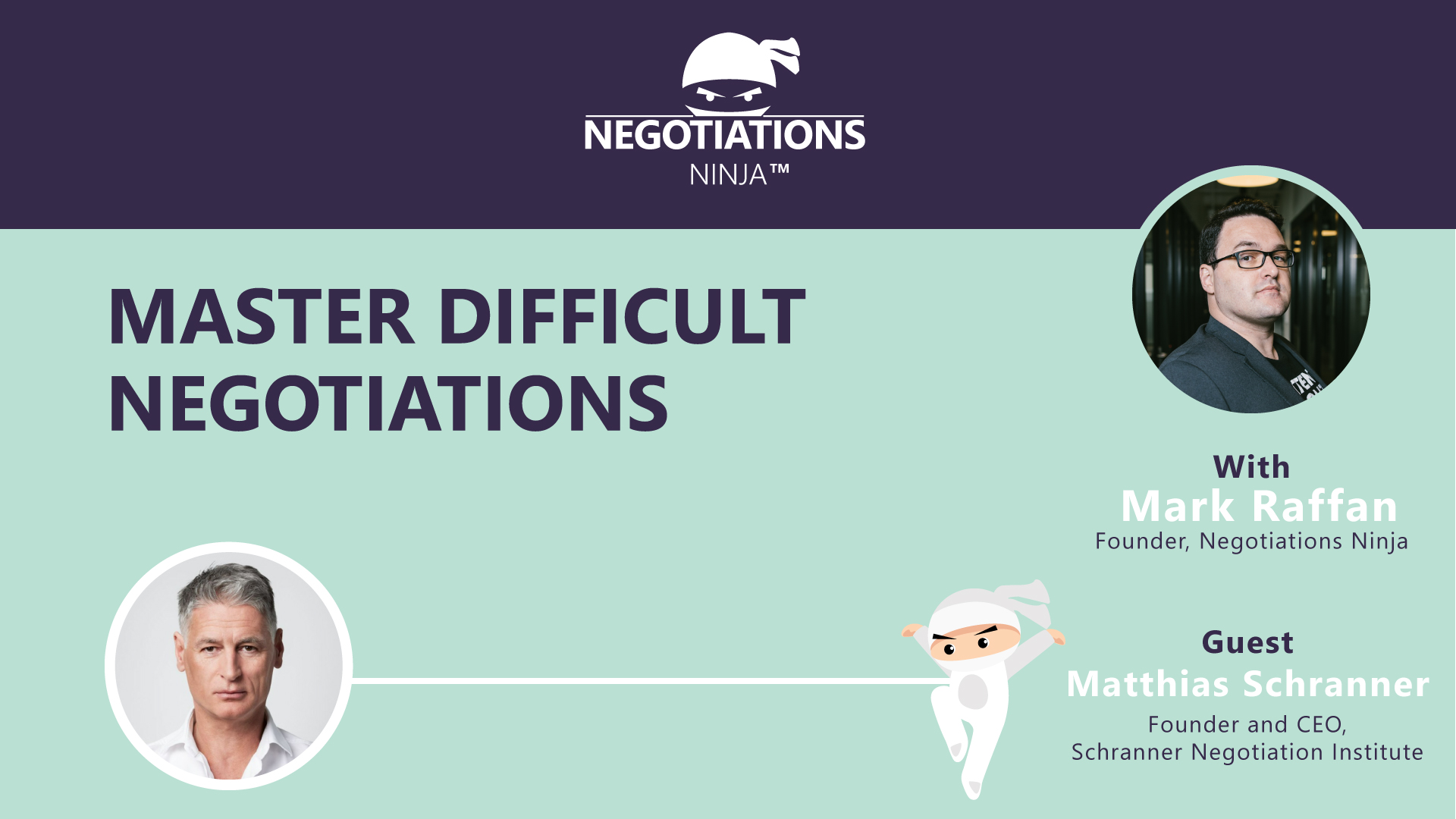Matthias Schranner specializes in especially difficult negotiations, those that you can’t simply win with preparation and a good argument. Coming to an agreement in a difficult negotiation often requires wildly different strategies than a simple business negotiation. Matthias was a hostage negotiator in Germany for over 14 years before he started his own business focusing on difficult negotiations in the Global World. He sheds light on the process of navigating difficult negotiations in this episode of Negotiations Ninja!
Outline of This Episode
- [2:04] Learn more about Matthias Schranner
- [2:55] Difficult negotiations need a different approach
- [4:25] When you should intentionally create a deadlock
- [6:03] Does a deadlock lead to creative solutions?
- [7:18] Why the walkaway point isn’t the worst-case scenario
- [11:41] Is there a need for alternatives?
- [13:20] How to change your perspective on conflict
- [18:17] Why people struggle with internal negotiations
Difficult negotiations merit a different approach
The preparation for a difficult negotiation is incredibly different from normal negotiation. In a typical situation, you’re trying to convince someone that your product or service is good for them. You come up with arguments to support your position.
But in a difficult negotiation, it’s impossible to convince your negotiation counterpart. You can’t convince them that they’re wrong and that they must accept your position. So what do you do? Focus on solving the conflict. If you push too hard, you may end up in a deadlock—but that isn’t always a bad thing.
When you should intentionally create a deadlock
A controlled deadlock is one of Matthias’s tactical approaches. An uncontrolled deadlock is based on emotions. If you’re influenced by stress or pressure and escalate emotionally, you’ll get angry and create a deadlock from your emotions. You’ve created a deadlock without a way out.
But with a controlled deadlock, you know the way out before you create the scenario. When would you need a deadlock? To give you time to create a new way forward. You need a different approach because normal tactics don’t work.
A deadlock is strategic. Your tone needs to remain respectful, or it won’t work. You create a deadlock by coming up with high demands. Now, the negotiation partner is forced to come up with new information. If you don’t create pressure, the other party won’t divulge what’s important to them. It forces them to share their real motive.
Why the walkaway point isn’t the worst-case scenario
If the other party walks away, it’s a signal that you’ve reached their redline or walkaway point. It gives you another piece of information. Typically, it means that you can attempt to restart the negotiation. Many times, Matthias intends to provoke the walkway.
But you can’t do it wrong. If someone walks away, you need to remain respectful and thank them for the opportunity. Return the focus to your common interests. Say something like, “From my perspective, I’m afraid that there’s no agreement today.”
But if you aren’t careful and respectful and you close all of the doors, you can’t come back from it.
Sometimes, they just need to walk away to have an internal negotiation. This gives both sides time to focus on creative problem-solving to find a new solution.
How else can you navigate a difficult negotiation? Matthias shares some more against-the-grain strategies in this episode of Negotiations Ninja!
Connect with Matthias Schranner
- Schranner Negotiation Institute
- Connect on LinkedIn
Connect With Mark
- Follow Negotiations Ninja on Twitter: @NegotiationPod
- Connect with Mark on LinkedIn
- Follow Negotiations Ninja on LinkedIn
- Connect on Instagram: @NegotiationPod




